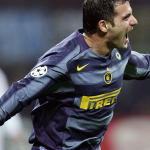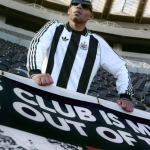
When brands copy other brand's kits
A choice sometimes forced to meet the wishes of clubs and fans
April 3rd, 2024
They say that the power of love can overcome any obstacle. It might be true, for sure this can be applied in football aesthetics. That’s because the passion and the devotion of the fans towards their favorite team sometimes can push brands to take surprising actions, namely celebrating the competition by re-proposing their best ideas. More specifically, reproduce the design created by other brands. It's the first rule of football, the kits must please the fans. And when fans cling onto a competitor's cutting-edge jersey design, brands have no other option but to replicate it in order to meet their needs. After all, the ultimate goal for brands is to sell kits.
To make an example, the most important one in Serie A involves Inter. The Nerazzurri are embracing a well-established 25 years and counting relationship with Nike and yet one of the most iconic shirts does not bear the Swoosh. Indeed, it was created by Umbro in the last year of their collaboration with the club. We are talking about the black and grey horizontal striped jersey with yellow details and blue trims used during the 1997/98 season only in European competitions. It is loved by Inter’s fans as the team then coached by Luigi Simoni won the UEFA Cup. On top of that, the iconic goal scored by Ronaldo in the final against Lazio helped the jersey to be forever remembered among all football fans, not just Inter’s ones. Over the past few years, Nike has introduced this idea twice - first in the 2005/06 season and then again in the 2020/21 season. On both occasions, they toned down the colors and softened the lines to highlight the intricate details.
As for the Premier League, the most recent case involves PUMA: last season the German brand took Manchester City’s fans down memory lane as they proposed the historic away jersey with red and black stripes, a model that had never been seen during the Nike era and last created by Umbro in 2011. A revisited concept with oblique and not vertical bands as tradition would have it. The examples do not end here. PUMA also created a phosphorescent yellow jersey for Borussia Dortmund during the 2021/22 season, a clear reference to the historic uniform created by Nike in the mid-90s. This is how it works and there's nothing that people can do about it. Not too long ago, Macron, an historic technical sponsor of Lazio, has brought back the iconic Ennerre jersey featuring an eagle emblem on the chest. They have also reintroduced a PUMA design with a horizontal black stripe across the top of the shirt. In a parallel situation, certain brands are obliged to reevaluate their designs, like adidas who chose to bring back a 1992 concept for Manchester United's away jersey in a modernized version for the 2021/22 season.
The moment a team wears a jersey, whatever brand designed the concept somehow loses ownership of it. It becomes an exclusive of the fans, and consequently of the clubs. It is no coincidence that, precisely to satisfy this feeling, many teams have proposed retro collections omitting the technical sponsor of the time. For example, AC Milan has reproduced the complete collection from the 1995/1996 season, originally designed by Lotto, and now offers it for sale in their store. This trend, that of making retro jerseys available, has also been followed by Juventus, Inter and Roma. But the same happens with almost all Premier League teams, from the big ones like Manchester United, Liverpool and Chelsea to those that have a smaller following outside of England like West Ham and Crystal Palace. As mentioned before, the jersey must satisfy the fans and they are increasingly fond of wearing their team's kit even outside of game day. It serves as an accessory, representing an extension of their personality. It embodies passion and love.










































